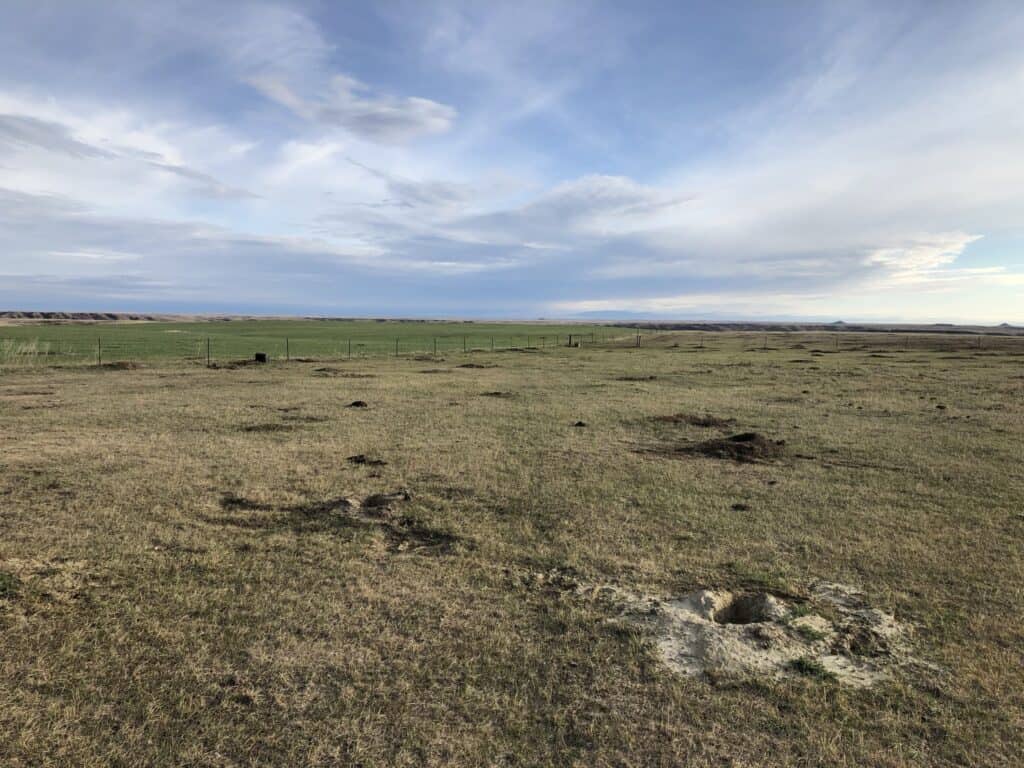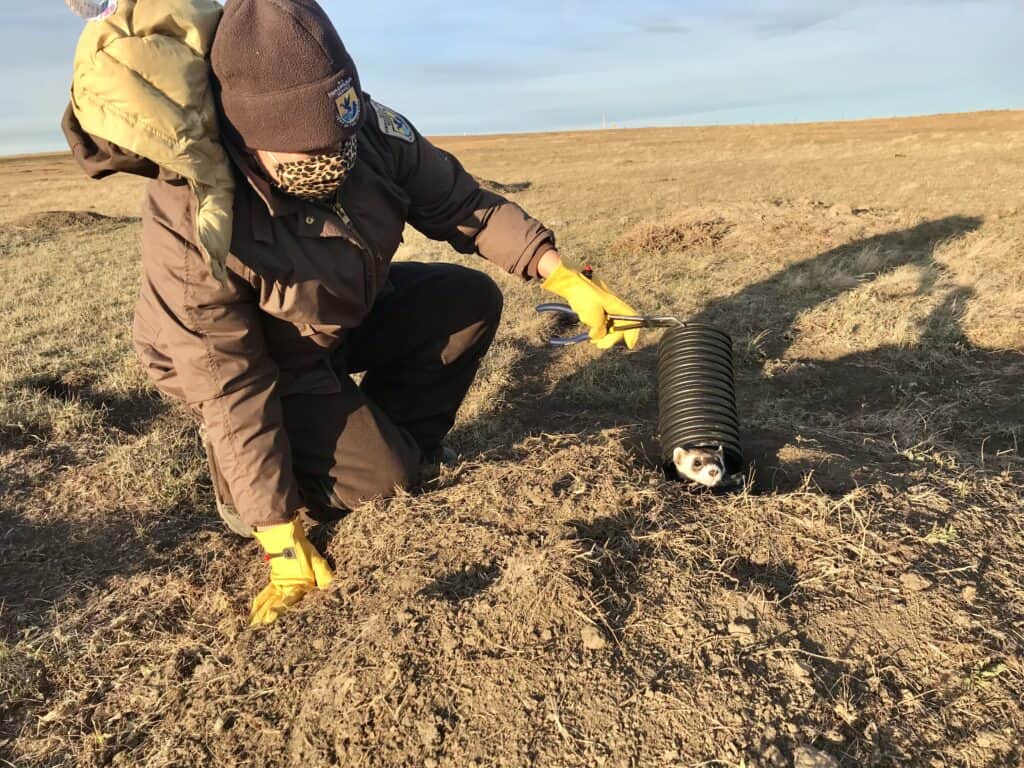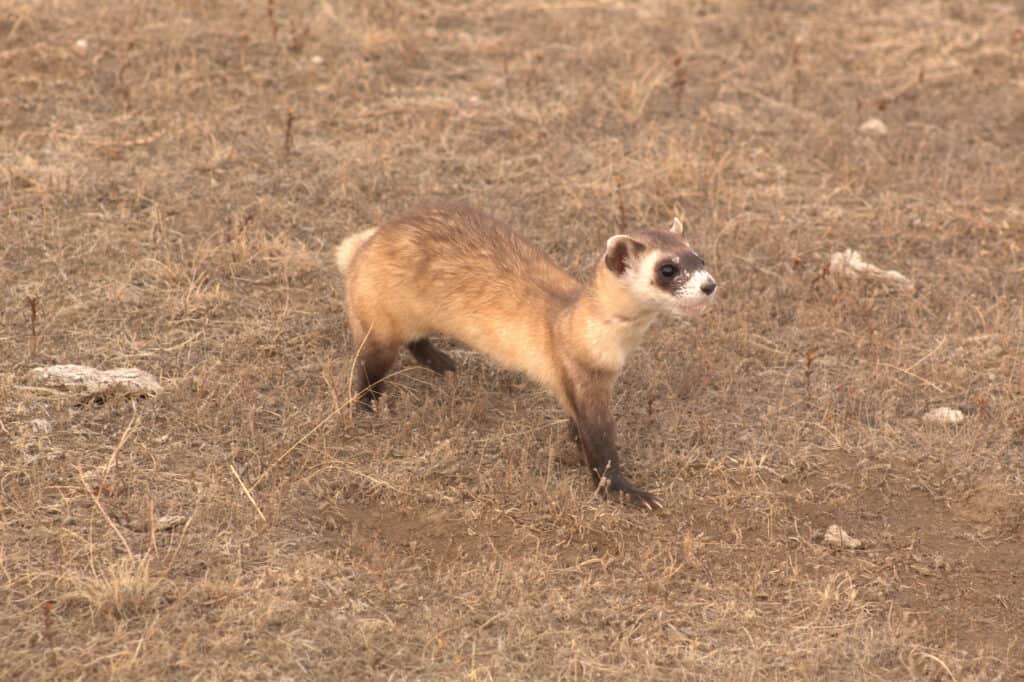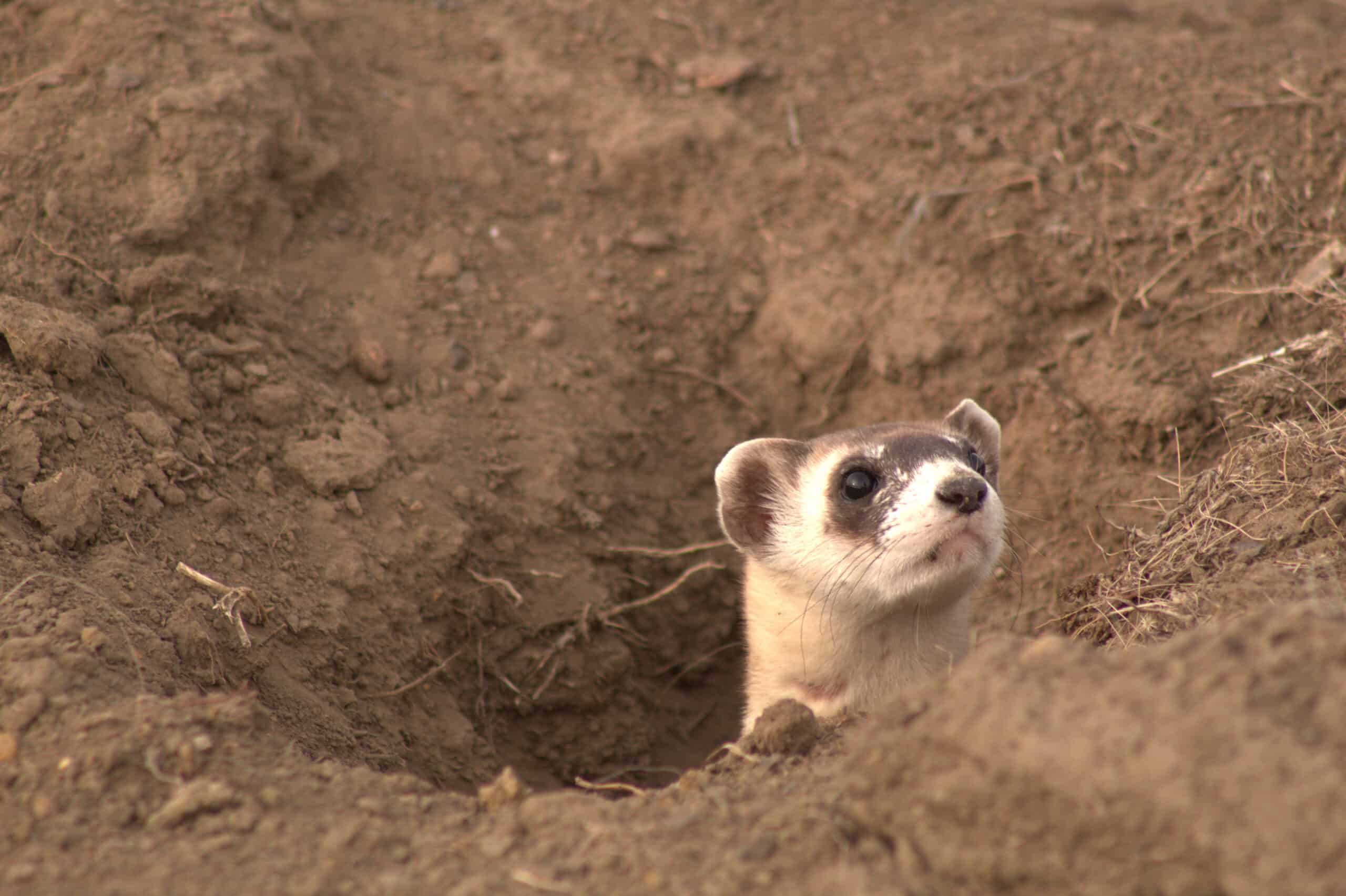Share this article
Wildlife Featured in this article
- Black-footed ferret
- Black-tailed prairie dog
TWS2022: Ferrets return to Standing Rock Sioux Reservation
The Standing Rock Sioux worked with the U.S. Fish and Wildlife Service to reintroduce the endangered species to parts of the reservation
Black-footed ferrets hadn’t been seen for decades on the Standing Rock Reservation that straddles the border of North and South Dakota. Like elsewhere in their former range, they had disappeared from the landscape.
But Standing Rock Game and Fish was interested in seeing the native species return.
In research presented at The Wildlife Society’s 2022 Annual Conference in Spokane, TWS member Lauren Toivonen, a biologist with the U.S. Fish and Wildlife Service, worked with Standing Rock Sioux Tribe starting in 2020 to reintroduce black-footed ferrets (Mustela nigripes), considered endangered by the U.S. Fish and Wildlife Service, to parts of the reservation.

Rangers from the Standing Rock Sioux Tribe Game and Fish Department brought Toivonen and her colleagues to survey known colonies of black-tailed prairie dogs (Cynomys ludovicianus)—the main prey item for the ferrets. In teams of two, they set on ATVs in September 2020 to map prairie dog colonies by GPS.
The Tribe also indicated areas where prairie dogs are being poisoned—ranchers in some areas don’t like the burrows the small mammals dig. But there was land in Standing Rock where poisoning was less frequent. With approval of Tribal council, biologists identified a tract of land and drafted a management plan.
In October 2021, the first cohort of 28 ferrets was introduced to Standing Rock. The ferrets were captive bred at the National Black-Footed Ferret Conservation Center, where they were vaccinated for sylvatic plague and canine distemper. A second release of 26 more followed last year.
The Tribal response has been good so far, Toivonen said—even people who don’t like prairie dogs like ferrets since they help control prairie dog populations. A school group came to watch the second release. “[The school children] were speaking Lakota to the ferrets,” Toivonen said.

The effort is ongoing—the team is waiting on approval to release more ferrets this year.
“Our hope is that the 13 pairs of breeding mates released will repopulate and thrive in their new environment,” Standing Rock Game and Fish Director, Jeff Kelly, stated in a press release.
Additional releases will help supplement these initial ferrets.
“By no means is this the end,” Toivonen said. “This is just the end of chapter one.”

Header Image: Biologists will release ferrets for three years in the Standing Rock Sioux Reservation. Credit: Seth Jones/USFWS








